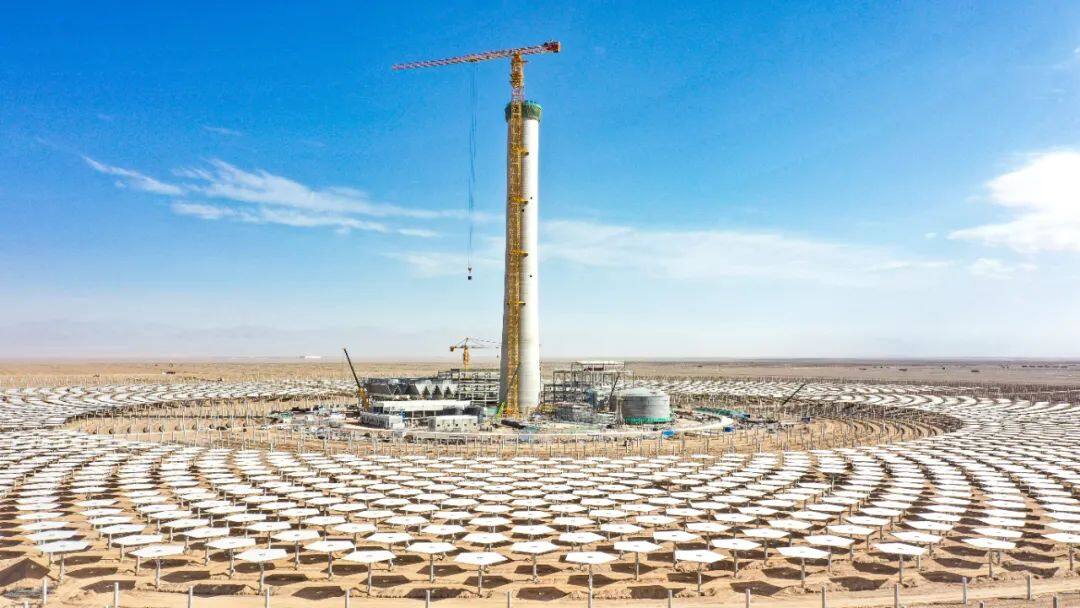Desert, Gobi, Desert large-scale concentrated solar power generation base
On September 19, 2023, the Aksai Huidong New Energy Photothermal+Photovoltaic Pilot Project undertaken by China Railway 11th Bureau successfully completed the top of the heat absorption tower, laying the foundation for subsequent grid connected power generation.
The Aksai Huidong New Energy Photothermal+Photovoltaic Pilot Project is a major construction project in Gansu Province and one of the demonstration (continuation) projects of the national «Desert, Gobi, Desert» large-scale solar thermal power generation base. The project is located in Aksai Kazakh Autonomous County, Jiuquan City, Gansu Province, with an overall installed capacity of 750 megawatts, including 110 megawatts for concentrated solar power generation and 640 megawatts for photovoltaic power generation.
The photothermal part of the project adopts tower type concentrated solar power generation technology, using molten salt as the thermal energy storage medium. After passing through the molten salt water heat exchange system, superheated steam is generated to drive the steam turbine for power generation; The photovoltaic part adopts single crystal high-efficiency PERC modules, which have the characteristics of high power generation, good power temperature coefficient, and small first-year attenuation. At the same time, a 330 kV collection station will be built on site, and connected to the nearby power grid through one 330 kV line.
The main construction content of China Railway 11th Bureau includes functional areas such as photovoltaic area, 330 kV gathering station area, photothermal power island area, photothermal mirror field area, secondary reflection tower and heat absorption tower area, collector line corridor area, and factory roads. It involves various work contents such as civil engineering, steel structure, electrical, water supply and drainage, fire protection, HVAC, etc., with many overlapping operations, complex processes, and great mutual interference, making on-site coordination and management difficult.
Among them, the heat absorption tower is 180.8 meters high, with a maximum outer diameter of 24.6 meters and a minimum outer diameter of 18.1 meters. It is a hollow thin-walled reinforced concrete structure, which is poured in sections and sections. It is the core structure of the entire project, and its safe and efficient operation directly affects the stability of the entire power generation system.
During construction, the builders of China Railway 11th Bureau successively overcame various difficulties such as high altitude, strong sandstorms, difficult water and electricity supply, and large temperature difference between day and night. They used a «hanging type» hydraulic lifting platform to provide an operating platform for the formwork turnover operation, ensuring the rapid progress of on-site construction. At the same time, the construction team has established a sound safety and quality management system, strengthened technical research, and developed key technologies such as quality control of thin-walled concrete structures under high temperature difference and strong evaporation climate conditions, and precision control of high-rise structure measurement and positioning. Combined with intelligent chemical land management systems and grid management methods, terminal control is implemented to ensure the one-time success of standardized construction.
After the completion of this project, it can achieve an average annual online electricity consumption of 1.7 billion kilowatt hours, with significant energy-saving and environmental benefits. It is of positive significance for achieving the goal of «carbon peaking and carbon neutrality», accelerating the construction of local new energy growth poles, and promoting high-quality economic development.


